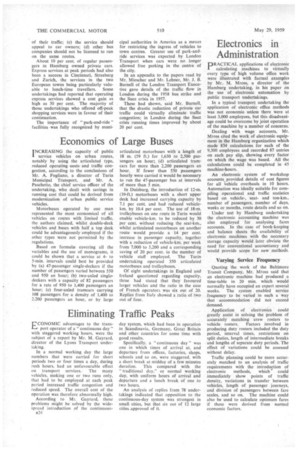Eliminating Traffic Peaks
Page 58

If you've noticed an error in this article please click here to report it so we can fix it.
ECONOMIC advantages to the trans1.--4 port operator of a " continuous day" with staggered working hours, were the subject of a report by Mr. M. Gayrard, director of the Lyons Transport undertaking.
In a normal working day the large numbers that were carried for short periods two or four times a day, during rush hours, had an unfavourable effect on transport services. The many vehicles, making one or two runs only, that had to be employed at each peak period increased traffic congestion and reduced speed. The overall cost of the operation was therefore abnormally high.
According to Mr. Gayrard, these problems might be solved by the widespread introduction of the continuous
day system, which had been in operation in Scandinavia, Germany, Great Britain and other countries for some time with good results.
Specifically, a "continuous day" was one in which times of arrival at, and departure from offices, factories, shops, schools and so on, were staggered, with a short break at midday of a few minutes duration. This compared with the "traditional day," or normal working day, with uniform hours of arrival and departure and a lunch break of one to two hours.
An analysis of replies from 78 undertakings indicated that opposition to the continuous-day system was strongest in small cities, but that six out of 12 large cities approved of it.




































































































